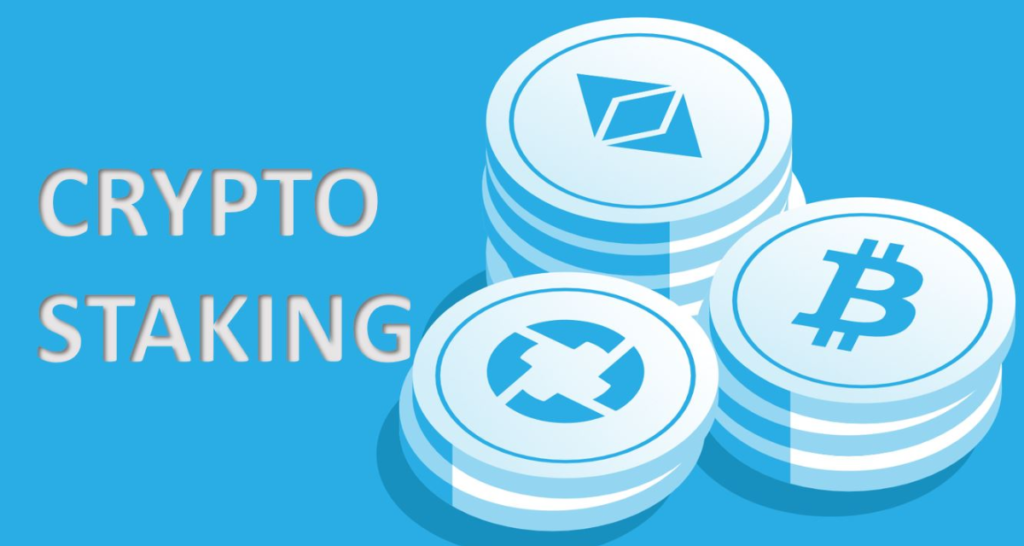Cryptocurrencies have revolutionized the financial landscape, providing individuals with decentralized and secure digital assets. While most people are familiar with popular cryptocurrencies like Bitcoin and Ethereum, there are many other exciting projects that offer unique features and capabilities. Staking crypto is one such concept that has gained significant attention in recent years.
In this guide, we will delve into the world of staking crypto and explore its intricacies. We will discuss the definition of staking, how it differs from traditional mining, and the potential benefits it offers to crypto enthusiasts. So, let’s dive in and explore the fascinating world of staking crypto.
What is Staking Crypto?
Staking crypto refers to the process of actively participating in a proof-of-stake (PoS) blockchain network by locking up a certain amount of cryptocurrency in a wallet to support the network’s operations. By doing so, stakers contribute to the security and validation of transactions on the network, ensuring its smooth functioning.
Unlike traditional proof-of-work (PoW) blockchains, which rely on miners to solve complex mathematical puzzles to validate transactions and create new blocks, proof-of-stake blockchains select validators based on the number of coins they hold and are willing to “stake.” Validators are responsible for verifying and validating transactions, maintaining network consensus, and securing the blockchain.
Staking crypto provides an alternative to the resource-intensive mining process used by PoW blockchains like Bitcoin. It allows individuals to earn passive income by holding and staking their crypto assets, thereby contributing to the network’s operations and security.
How Does Staking Crypto Work?
To participate in staking crypto, you first need to acquire and hold a compatible cryptocurrency that operates on a proof-of-stake blockchain. Popular cryptocurrencies that support staking include Ethereum 2.0, Cardano, Polkadot, and many others.

Here’s a step-by-step breakdown of how staking crypto works:
- Acquire Compatible Cryptocurrency: Begin by acquiring a cryptocurrency that supports staking. Conduct thorough research and choose a project that aligns with your investment goals and risk tolerance.
- Set Up a Wallet: Once you’ve acquired the cryptocurrency, set up a wallet that is compatible with the specific blockchain. It’s crucial to choose a secure and reputable wallet to ensure the safety of your staked assets.
- Transfer Cryptocurrency to the Wallet: Transfer the acquired cryptocurrency from the exchange to your wallet. This will enable you to hold and stake the coins.
- Choose a Staking Service or Run a Validator Node: Depending on the blockchain, you can either stake your coins directly from your wallet or utilize a staking service provider. Some projects also allow users to run a validator node, which involves setting up and maintaining network infrastructure to validate transactions.
- Lock Up and Stake Your Coins: Once you’ve chosen the staking method, lock up a specific amount of coins as required by the network. This process varies depending on the blockchain, but it typically involves sending a transaction to the network, indicating your intent to stake.
- Start Earning Rewards: After successfully staking your coins, you become an active participant in the network. As a reward for your contribution, you will earn additional cryptocurrency in the form of staking rewards. The rewards are typically proportional to the number of coins you have staked.
- Monitor and Manage Your Staked Assets: Keep an eye on your staked assets and manage your staking activities. Regularly update your wallet software, stay informed about network upgrades, and make informed decisions regarding your staking strategy.
Benefits of Staking Crypto
Staking crypto offers several compelling benefits to participants. Let’s explore some of the key advantages:
- Passive Income: One of the most significant advantages of staking crypto is the potential to earn passive income. By staking your coins, you actively contribute to the network’s operations and, in return, receive rewards. These rewards can provide a consistent income stream, especially in comparison to the volatile nature of crypto trading.
- Token Appreciation: In addition to earning staking rewards, holding a cryptocurrency that supports staking can also lead to potential token appreciation. As the network gains adoption and demand for the cryptocurrency increases, the value of the staked coins may rise, resulting in additional profits.
- Participate in Network Governance: Many proof-of-stake blockchains allow token holders to participate in the network’s governance decisions. By staking your coins, you gain voting rights and the ability to influence important protocol changes and updates. This level of participation empowers the community and fosters a decentralized ecosystem.
- Energy Efficiency: Staking crypto is significantly more energy-efficient compared to traditional mining. Proof-of-stake blockchains eliminate the need for expensive and energy-consuming mining rigs, reducing the carbon footprint associated with crypto activities.
- Lower Entry Barrier: Staking crypto typically has a lower entry barrier compared to mining. With mining, individuals need to invest in expensive hardware and manage complex setups. Staking, on the other hand, only requires the acquisition of a compatible cryptocurrency and setting up a wallet, making it more accessible to a wider audience.
- Long-Term Investment Strategy: Staking crypto can be seen as a long-term investment strategy. By staking and holding a promising cryptocurrency, you position yourself to benefit from its potential growth over time. This approach aligns with the “HODL” (Hold On for Dear Life) mentality embraced by many crypto enthusiasts.
FAQs
Q: What are the risks associated with staking crypto?
A: While staking crypto offers attractive benefits, it’s important to consider the associated risks. Some potential risks include:
- Price Volatility: The cryptocurrency market is known for its volatility, and staked assets are not immune to price fluctuations. The value of your staked coins can decrease, affecting your overall investment.
- Slashing: Proof-of-stake blockchains employ mechanisms to penalize validators for malicious behavior or network disruptions. Validators may face “slashing” penalties, resulting in the loss of a portion of their staked coins if they fail to fulfill their responsibilities.
- Network Risks: Staking on a blockchain that is vulnerable to attacks or lacks security measures can put your staked assets at risk. Thoroughly research the project and its security protocols before staking your coins.
Q: Can I unstake my coins at any time?
A: The unstaking process varies depending on the blockchain and the specific staking period. Some networks enforce lock-up periods during which you cannot unstake your coins. It’s important to familiarize yourself with the staking requirements and unstaking procedures before committing to staking your coins.
Q: How do staking rewards work?
A: Staking rewards are typically distributed in proportion to the number of coins you have staked and the duration of your staking period. The exact reward distribution mechanism varies across different blockchains. It’s crucial to understand the reward structure of the specific blockchain you’re stakingon to maximize your potential earnings.
Q: Are there any tax implications for staking crypto?
A: Tax regulations vary by jurisdiction, and the treatment of staking rewards may differ as well. In some cases, staking rewards may be considered taxable income. It’s important to consult with a tax professional or research the tax laws in your country to ensure compliance and proper reporting of your staking activities.
Q: Can I stake multiple cryptocurrencies simultaneously?
A: Yes, depending on the blockchain and staking service, you may be able to stake multiple cryptocurrencies simultaneously. However, it’s essential to understand the specific requirements and limitations of each blockchain and ensure compatibility with your chosen staking service.
Q: Can I stake my crypto on a centralized exchange?
A: Some centralized exchanges offer staking services, allowing users to stake their crypto assets directly on the platform. While this provides convenience, it’s important to consider the risks associated with centralized custody of your assets. Research the exchange’s security measures and reputation before opting for their staking services.
Q: Can I stake any amount of crypto, or are there minimum requirements?
A: Each blockchain sets its own staking requirements, including minimum staking amounts. It’s crucial to research the specific blockchain you’re interested in and determine the minimum staking threshold. Some blockchains have lower entry barriers, allowing users to stake smaller amounts, while others require a significant investment to participate.
Q: Can I stake my crypto if it’s held in a hardware wallet?
A: In most cases, you can stake your crypto even if it’s held in a hardware wallet. Hardware wallets provide an extra layer of security for your assets. However, it’s important to ensure compatibility between your hardware wallet and the staking platform or service you choose.
Conclusion
Staking crypto is a fascinating aspect of the cryptocurrency ecosystem that offers numerous benefits to participants. By actively participating in proof-of-stake blockchains, individuals can contribute to the network’s security, earn passive income, and participate in governance decisions. However, it’s essential to conduct thorough research, understand the risks involved, and choose reputable staking platforms or services.
As the crypto industry continues to evolve, staking crypto is poised to play a significant role in shaping the future of decentralized finance. By staking your crypto assets, you become an active participant in the network, contributing to its growth and security while enjoying potential rewards.
So, are you ready to dive into the world of staking crypto? Start by acquiring a compatible cryptocurrency, set up a secure wallet, and explore the various staking opportunities available. With careful consideration and a long-term investment strategy, staking crypto can become a rewarding experience in more ways than one.


